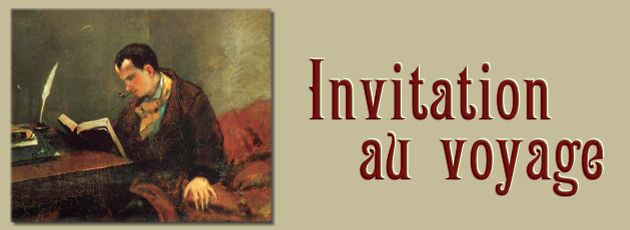“Soy una Sor Juana de Arco electrónica”: Severo Sarduy’s radio play “Dolores Rondón.”(1)
Anke Birkenmaier, Indiana University, Bloomington
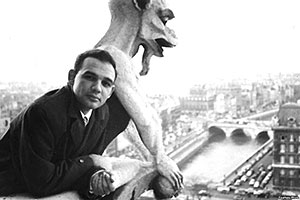 In 1977 Roland Barthes wrote about Severo Sarduy’s radio play La playa: “[Sarduy] inhabits language happily: his love of words is not mania (no verbalism) but affect. Hence the paradoxical result: the futility staged by him gleams with the happiness of writing; this confidence is worthy of our listening” (Barthes in: S. Sarduy, Para la voz 8).(1) In referring to a play that at that point had only been performed live –first on radio and then as a theater play--, Barthes deliberately associated Sarduy with the happiness of the spoken word, with what he had called in another essay the “grain of the voice.” He locates this not so much in meaningful utterances but in the intentional agitation of words whose beauty was to be found in the flexing of speech in its materiality, sounds and cadence. As a good poststructuralist, Barthes refused to categorically differentiate between the meaning generated by the spoken voice and in writing, like Jacques Derrida, who had in his Grammatology famously written against the “metaphysics of presence” inherent in Western language philosophy. Nevertheless, Sarduy’s voice somehow “rang” happier, and it seems not entirely coincidental that Barthes was motivated to reflect on Sarduy’s language when witnessing a
In 1977 Roland Barthes wrote about Severo Sarduy’s radio play La playa: “[Sarduy] inhabits language happily: his love of words is not mania (no verbalism) but affect. Hence the paradoxical result: the futility staged by him gleams with the happiness of writing; this confidence is worthy of our listening” (Barthes in: S. Sarduy, Para la voz 8).(1) In referring to a play that at that point had only been performed live –first on radio and then as a theater play--, Barthes deliberately associated Sarduy with the happiness of the spoken word, with what he had called in another essay the “grain of the voice.” He locates this not so much in meaningful utterances but in the intentional agitation of words whose beauty was to be found in the flexing of speech in its materiality, sounds and cadence. As a good poststructuralist, Barthes refused to categorically differentiate between the meaning generated by the spoken voice and in writing, like Jacques Derrida, who had in his Grammatology famously written against the “metaphysics of presence” inherent in Western language philosophy. Nevertheless, Sarduy’s voice somehow “rang” happier, and it seems not entirely coincidental that Barthes was motivated to reflect on Sarduy’s language when witnessing a performance rather than reading him.
performance rather than reading him.
More than twenty years after his passing, Sarduy’s work has continued to intrigue readers and scholars of all stripes. Vilashini Coopaan has studied Sarduy’s later novels as structured by “national lack” using a postcolonial, Lacanian lens; Guillermina de Ferrari also has focused on his later work, reading it in the context of Caribbean 20th-century fin-de-siècle literature as shaped by an ethics of the “malleable body.” In Cuba, Cira Romero has published Sarduy’s journalistic work from before he left Cuba, and his sister Mercedes Sarduy has movingly written about their years growing up together in Camagüey and Havana, as well as their correspondence and visits until his illness and death in Paris, in 1993. Strikingly, two books have focused on Sarduy’s relationship to the visual arts; El Oriente en Sarduy is the catalogue of a traveling exhibit organized by Gustavo Guerrero, compiling Sarduy’s paintings and writings related to his lifelong interest in China, India, and Japan, as well as the objects he brought back from his trips there. Rolando Pérez’s book Sarduy and the Neo-Baroque Image of Thought in the Visual Arts in turn studies Sarduy’s essays, poetry, and his radio play, “Los matadores de hormiga” arguing that Sarduy practiced a type of combine-writing: “Whatever he did either as a writer or as a painter came directly from his philosophy of the pictorial image” (Pérez 8). But apart from Pérez’s excellent chapter on “Los matadores,” little attention has been paid to what the Obra completa calls  Sarduy’s “theater,” that is, his radio-plays written between 1965 and 1975. Scripts of four of these plays had been published in Spanish in the anthology Para la voz, but other than the occasional mention, these plays don’t seem to have found many readers. Most likely, this has to do with the fact that radio, perhaps even more so than theater, is an ephemeral medium. Recordings of radio plays are often not easily available, and radio’s limitation to the staging of voices can lead critics to think that the written text of a play has them still miss a significant portion of the performance, especially if broadcast in another language, as it was the case with Sarduy’s six radio plays, written for the German radio and later aired in English and French. It also has to do, as I’ll explain further on, with the genre of the radio-play (or German Hörspiel), with which Sarduy himself only became familiar after his arrival in France, and which never was very popular in Cuba or the United States. Yet, if we want to understand that specific quality of Sarduy’s language appreciated so highly by Barthes, we should want to scrutinize more closely his remarks on sound and its transmission through the radio, as well as his radio plays, to the extent to which they are available to us.
Sarduy’s “theater,” that is, his radio-plays written between 1965 and 1975. Scripts of four of these plays had been published in Spanish in the anthology Para la voz, but other than the occasional mention, these plays don’t seem to have found many readers. Most likely, this has to do with the fact that radio, perhaps even more so than theater, is an ephemeral medium. Recordings of radio plays are often not easily available, and radio’s limitation to the staging of voices can lead critics to think that the written text of a play has them still miss a significant portion of the performance, especially if broadcast in another language, as it was the case with Sarduy’s six radio plays, written for the German radio and later aired in English and French. It also has to do, as I’ll explain further on, with the genre of the radio-play (or German Hörspiel), with which Sarduy himself only became familiar after his arrival in France, and which never was very popular in Cuba or the United States. Yet, if we want to understand that specific quality of Sarduy’s language appreciated so highly by Barthes, we should want to scrutinize more closely his remarks on sound and its transmission through the radio, as well as his radio plays, to the extent to which they are available to us.
Much attention has been paid in the last decades to how sound and listening are realms of perception and consciousness that have their own cultural history, just like the written word and the visual arts do. As Jonathan Sterne and others have pointed out, these sonic histories include everyday noises, spoken dialects and oral registers, music, as well as locally specific ways of using sound reproduction technologies.(3) Radio is just one such sound reproduction technology of many others (like the telephone, the telegraph, or today, skype), but it is really the only one that is both purely acousmatic and a mass medium, that is, an apparatus that reaches a massive audience of listeners who cannot see the source of a voice or sound. This can lend radio an uncanny quality, because anonymous voices and sounds are often received in private spaces like the home or the car, without any possible communication between the sender and the receiver.
Within the sonic localized histories of radio written in the last decades, the experimental radio plays written in the 1950s through the 1980s by writers such as Samuel Beckett, Nathalie Sarraute and arguably Sarduy occupy a special category which, as radio critic Debra Rae Cohen has argued, was a constitutive impulse behind the formation of modernist subjectivities and aesthetics (Cohen). These European modernist plays followed on the heels of the golden age of 1930s and 1940s radio broadcasting, which had popularized genres such as the daytime soap operas, the crime serial, and other shows in the U.S., Europe, and in Cuba.(4) Significantly, in post-war Europe, however, German federal radio stations and public radio stations such as the BBC in London and Radio France Internationale began to consider radio entertainment an important educational tool. To that effect, they gave radio producers a considerable amount of freedom to experiment and paid them generously, making it attractive for authors to collaborate, with plays in translation traded back and forth between countries.(5) As Martin Esslin has shown, Beckett’s radio plays for example offer key insights not only into radio itself as a medium but also allow us to see a more general “preoccupation with the process of human consciousness as an incessant verbal flow” (Esslin 280-81). Similarly, Sarraute’s first radio play “Le silence” was built around a silent character, silence being the one element that cannot be represented in radio broadcasting (Landfried). Modernist European radio writers of the 1950s and 1960s in this way questioned the populist premises on which previous radio genres had built their success.
How did Sarduy, having grown up with Cuban radio and arriving in 1960 in Paris with a fellowship to study art history at the Ecole du Louvre, reconcile his own personal sound world with what soon became his new country of residence? When writing about his absence from Cuba, thirty years later, Sarduy certainly remarked on the sounds and voices that he missed, next to the language he had left behind, even though he continued to write all his life in Spanish.(6) From all we know, however, radio must have played an important role in his adjustment to life in France, as he quickly became immersed in French and even German radio culture. It was about a year after his arrival in France that he began to work for Radio France Internationale, where he would soon host two regular Spanish-language radio programs, “Literatura en debate” and “La ciencia en Francia.” He was to stay with Radio France Internationale for more than twenty-five years, with a salary that complemented his work as an editor for the Seuil publishing house.(7) From 1965 on, Sarduy also collaborated with the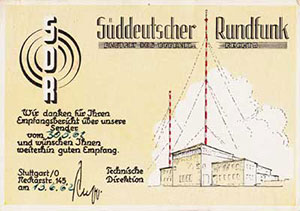 German radio station Süddeutscher Rundfunk (SDR), thanks to the mediation of the art historian living in Paris, Werner Spies. Sarduy ended up writing a total of six plays commissioned for the SDR, premiered between 1965 and 1975 in German translation, many of them also broadcast in translation in France and England.(8) The original Spanish language text of four of these plays, was published in his anthology mentioned before, Para la voz. The other two radio plays, “Dolores Rondón” (1965) and “Medina Azahara” (1971), were broadcast on German radio but never published otherwise.(9) Strikingly, these two radio plays are not only the ones that have most local Cuban or Hispanic elements, but also that are more conservative in the way in which they present characters and narrative plots. And yet, these two pieces would appear reworked in his novelistic fiction, whereas Sarduy let the other plays stand as radio plays only.(10) In his first years in Paris and even after the broadcasting of “Dolores Rondón,” in Germany, Sarduy did not give much thought to his radio work, emphasizing in a letter to his sister in 1967, shortly after De donde son los cantantes had been published, that his true ambition was to write novels.(11) Things seem to have gradually changed though, as Sarduy must have realized that he had become part of a rather exclusive club of avant-garde writers who were producing a good number of radio plays broadcast in translation in Germany and at major radio stations in France and England.(12)
German radio station Süddeutscher Rundfunk (SDR), thanks to the mediation of the art historian living in Paris, Werner Spies. Sarduy ended up writing a total of six plays commissioned for the SDR, premiered between 1965 and 1975 in German translation, many of them also broadcast in translation in France and England.(8) The original Spanish language text of four of these plays, was published in his anthology mentioned before, Para la voz. The other two radio plays, “Dolores Rondón” (1965) and “Medina Azahara” (1971), were broadcast on German radio but never published otherwise.(9) Strikingly, these two radio plays are not only the ones that have most local Cuban or Hispanic elements, but also that are more conservative in the way in which they present characters and narrative plots. And yet, these two pieces would appear reworked in his novelistic fiction, whereas Sarduy let the other plays stand as radio plays only.(10) In his first years in Paris and even after the broadcasting of “Dolores Rondón,” in Germany, Sarduy did not give much thought to his radio work, emphasizing in a letter to his sister in 1967, shortly after De donde son los cantantes had been published, that his true ambition was to write novels.(11) Things seem to have gradually changed though, as Sarduy must have realized that he had become part of a rather exclusive club of avant-garde writers who were producing a good number of radio plays broadcast in translation in Germany and at major radio stations in France and England.(12)
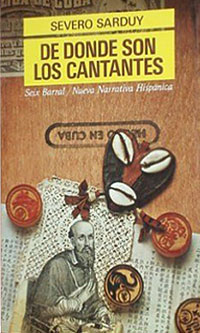 In what way are Sarduy’s radio plays driven by the same concerns and formal language of European modernist radio drama? And reversely, how “Cuban” are the radio plays that he ended up writing, given that he had to adjust his own sonic world to a mostly German audience entirely unfamiliar with it? Finally, how “radiophonic” was Sarduy’s writing for the radio, and how seriously did he engage with it as an art form?
In what way are Sarduy’s radio plays driven by the same concerns and formal language of European modernist radio drama? And reversely, how “Cuban” are the radio plays that he ended up writing, given that he had to adjust his own sonic world to a mostly German audience entirely unfamiliar with it? Finally, how “radiophonic” was Sarduy’s writing for the radio, and how seriously did he engage with it as an art form?
While indeed Sarduy has written most eloquently about literature and the visual arts, about sound and music we have one short but significant text from 1985. In “Soy una Juana de Arco electrónica, actual” he writes:
Como la santa guerrera [Juana de Arco], oigo voces. No me ordenan ningún sacrificio, ninguna oblación de mi cuerpo, de mi persona. Sólo que no escribo más que para esas voces.
El texto—y no sólo un texto radiofónico; todos, hasta un poema—nunca se me presenta en abstracto, desencarnado, si así puede decirse, reducido a su desnudez o a su conceptualidad. Nunca pienso en un argumento o en un contenido preciso que las palabras, más tarde, se encargarían de consignar laboriosamente, de cincelar. Todo ya está “dicho” desde el comienzo, no hay más comienzo que el de la escucha.
Like the holy warrior [Joan of Arc] I hear voices. They don’t order me any sacrifice or oblation of my body or person. But I only write for these voices. The text—and not only a radiophonic text; all of them, even a poem—never presents itself to me in an abstract, unembodied way, if I may say so, reduced to its nakedness or conceptuality. I never think of an argument or content matter that words, later on, would have to render and carve laboriously. Everything is already “said” from the beginning, there is no beginning but in listening (S. Sarduy Obra completa I, 30).
Literary creation is in this way associated with the mediating presence of “embodied” words or voices carrying an authority that demands writing. While using at first the saintly Joan of Arc as a context, Sarduy further on explains these powers of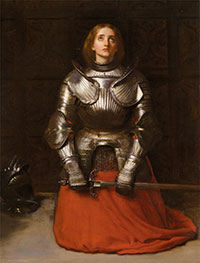 the spoken word as an erotic bonding:
the spoken word as an erotic bonding:
Lo primero que atrae mi atención y capta o no mi erotismo, es la voz. Eso, muy particular, que Roland Barthes llamó […] el grano de la voz. Una textura, una entonación, una rugosidad, un timbre, un deje: algo que une al cuerpo con otra cosa, que a la vez lo centra, lo motiva y lo trasciende; algo que es como el doble del cuerpo y del que emite la voz en otra esfera, en una cámara de eco que es su espacio verdadero, su verdad.
The first thing that attracts my attention and captures or doesn’t capture my erotism, is the voice. That very particular thing that Roland Barthes called […] the grain of the voice. A texture, an intonation, a roughness, a timbre, an accent: something that unites the body with something else, which at once centers, motivates, and transcends it; something that is like a double of the body and from where the voice transmits toward another sphere, in an echo chamber that is its true spaces, its truth (S. Sarduy Obra completa I, 30).
Here, writing seems to be a vocation and an act of seduction, at the same time intimate pleasure and communal call. This is why Sarduy in this late text is quite proud to work for the radio, preferring it over television: “la brusca y abusiva irrupción 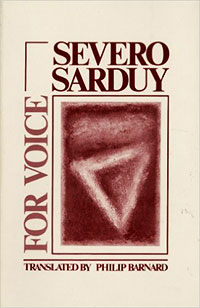 de la imagen en el mundo contemporáneo de nuestra comunicación redundante ha impedido que se explore ese continente, paradójicamente abandonado antes de ser conquistado, que es el de la radio, el de la voz. Queda mucho por descubrir […]. La era de la voz está por venir” [“the abrupt and abusive irruption of the image in the contemporary world of our redundant communication has hampered the exploration of that continent paradoxically abandoned before being conquered which is that of the radio, the voice. There is still much left to discover (…). The era of the voice is about to come” (30)].
de la imagen en el mundo contemporáneo de nuestra comunicación redundante ha impedido que se explore ese continente, paradójicamente abandonado antes de ser conquistado, que es el de la radio, el de la voz. Queda mucho por descubrir […]. La era de la voz está por venir” [“the abrupt and abusive irruption of the image in the contemporary world of our redundant communication has hampered the exploration of that continent paradoxically abandoned before being conquered which is that of the radio, the voice. There is still much left to discover (…). The era of the voice is about to come” (30)].
In his emphasis on the dictate of voices, Sarduy is not unlike Beckett, who told Esslin about his own method of writing that “having attained a state of concentration, he merely listened to the voice emerging from the depths, which he then tried to take down” (Esslin 289). Both writers associate the voice with what inspires them and thus is at the heart of their subjectivity as creators. In both cases, this inspiration by voices has an embodied and an abstract character at the same time, whereby voices are perceived as more meaningful because embodied, but also as separate from their origin, acousmatic voices indeed.(13) The author’s own voice becomes in this constellation, like in a Lacanian psychoanalytical session, a flow of speech that is directed at the psychoanalyst who remains invisible, seated behind the patient. But unlike with the psychoanalyst’s silence, the voices heard by the author speak back, “authorizing” his speech (Kane 216-18).
This communicative scenario of an author who listens to anonymous voices and projects a dialogue echoing those voices also appears in Sarduy’s radio plays, and is only further radicalized in De donde son los cantantes and later novels. One might say even that Sarduy’s unique theme in all his radio plays is the question of what constitutes an authoritative voice or a subject. In his earlier plays, some voices appear as strong, conventional characters, such as the main protagonist of his play, Dolores Rondón; yet others only exist in groups and in relation to each other, as for example the three Fates, Auxilio, Socorro, and Clemencia, who accompany Dolores, acting similar to the choirs of Greek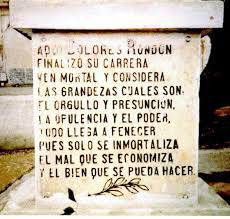 tragedies. From “Dolores Rondón” on, voices often do not speak to each other, but rather listen, overhear and comment on each other, turning the play into an echo chamber. The subject appears to be constituted in this way by the enclosed space of its own consciousness, in relation to other voices that it hears, immaterial and yet bound to the body, relating to others in oblique ways rather than through dialogue.(14) Another trademark of Sarduy’s work with this new kind of subjectivity is how he turns characters into ideas rather than attempting to give them the resemblance of life-like human beings. Auxilio, Socorro, and Clemencia, to stay with the same example, are introduced as companions of Dolores, but really are allegories of “assistance” and “mercy” (hence their names) to Dolores, who represents “suffering.” The pitch of their voices (a high-pitched whispering) highlights their subordinate function and is devoid of any individuality. Sarduy’s later radio plays radicalize this principle of groupings according to pitch, avoiding to give names at all, and rather using generic functions such as “Man 1”, “Man 2”, “Woman 1”, “Woman 2,” and so forth.
tragedies. From “Dolores Rondón” on, voices often do not speak to each other, but rather listen, overhear and comment on each other, turning the play into an echo chamber. The subject appears to be constituted in this way by the enclosed space of its own consciousness, in relation to other voices that it hears, immaterial and yet bound to the body, relating to others in oblique ways rather than through dialogue.(14) Another trademark of Sarduy’s work with this new kind of subjectivity is how he turns characters into ideas rather than attempting to give them the resemblance of life-like human beings. Auxilio, Socorro, and Clemencia, to stay with the same example, are introduced as companions of Dolores, but really are allegories of “assistance” and “mercy” (hence their names) to Dolores, who represents “suffering.” The pitch of their voices (a high-pitched whispering) highlights their subordinate function and is devoid of any individuality. Sarduy’s later radio plays radicalize this principle of groupings according to pitch, avoiding to give names at all, and rather using generic functions such as “Man 1”, “Man 2”, “Woman 1”, “Woman 2,” and so forth.
In introducing new forms of interaction to his radio plays, Sarduy probed into ways of thinking about forms of bodily and linguistic expression that he explored at greater length in his novels.(15) A poetics in process evolved in his radio plays, with the voice itself as the main protagonist, devoid of psychology. His characters moved in a sonic space of anonymous voices and sounds that interacted in other than dialogical ways, opening up the word to the sheer materiality of sound and allowing for new kinds of subjectivity and subject interaction.
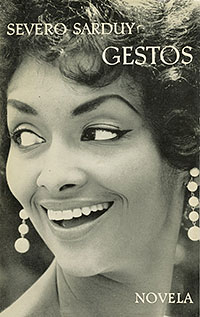 In what follows I will look at Sarduy’s first radio play “Dolores Rondón,” which he integrated with few changes as the central chapter of his second novel, De donde son los cantantes (1967).(16) In many ways, this was a transitional play, coming at once out of his experience with Cuban radio and popular culture and including a pitch to “translate” a very Cuban story for a foreign audience. In its formal language as well, “Dolores Rondón” stands between Sarduy’s first, still conventional novel Gestos and his more experimental second novel De donde son los cantantes. For all these reasons “Dolores Rondón” allows us to better see how Sarduy negotiated the demands placed on him as a salaried writer for European radio stations with his own evolving style as a Cuban novelist.
In what follows I will look at Sarduy’s first radio play “Dolores Rondón,” which he integrated with few changes as the central chapter of his second novel, De donde son los cantantes (1967).(16) In many ways, this was a transitional play, coming at once out of his experience with Cuban radio and popular culture and including a pitch to “translate” a very Cuban story for a foreign audience. In its formal language as well, “Dolores Rondón” stands between Sarduy’s first, still conventional novel Gestos and his more experimental second novel De donde son los cantantes. For all these reasons “Dolores Rondón” allows us to better see how Sarduy negotiated the demands placed on him as a salaried writer for European radio stations with his own evolving style as a Cuban novelist.
“Dolores Rondón” was about a mixed-race woman who had lived in the early twentieth century in Sarduy’s hometown Camagüey. He knew by hear the epitaph on her tombstone in the cemetery of Camagüey, and it became the basis of his radio play, with two narrators commenting one by one the ten verses of the epitaph. Sarduy then turned the play with very few alterations into the third of his five chapters of De donde son los cantantes. The story itself is brief, and proceeds in a non-chronological way in the play (as well as the novel chapter): Dolores is tired of living in provincial Camagüey; she meets a Spanish provincial politician, Mortal Pérez, with whom she moves to Havana, following his electoral success. But in Havana she begins to squander money and neglects to honor Afro-Cuban tradition. Mortal Pérez falls out of favor with the president, and Dolores loses everything, including Mortal. She moves back to Camagüey and is killed there by a henchman of jealous Mortal.
Sarduy himself described “Dolores Rondón,” in a letter to his sister, as a “sainete radiofónico,” the sainete being a distinctly Hispanic type of comic theater or opera. Sainetes are considered light entertainment, combining music and the spoken word, and Sarduy’s play might have felt like a provocation to German radio professionals, as it was certainly different from the more didactic German radio tradition.(17) Dolores’s epitaph came out of the Hispanic tradition of the décima, a ten-line stanza and a type of improvised poetry, using a fairly complicated rhyme and meter to render a wide range of subjects. Décimas are still part of the oral folklore of individual families in the Mexico-Texas border area, for example (Bauman). In Cuba, too, the writing and recitation of décimas is an ongoing tradition, and it was quite commonly used in Cuban radio shows of the 1940s and 1950s.
As his sister Mercedes recalls, Severo Sarduy liked to listen to Cuban radio when growing up in Camagüey, especially to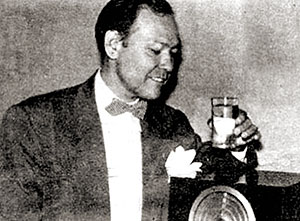 two afternoon programs that included improvised music and décimas.(18) One of them was called El vaso de agua de Clavelito, using as an opener the memorable refrain “Pon tu pensamiento en mi / verás que en este momento / mi fuerza de pensamiento / ejerce el bien sobre ti” (“Start thinking of me / you will see that in that moment / my powers of thought / will do you good”). As the refrain suggested, this was a call-in show inviting listeners to get help with daily problems, taking the host’s good advice aided by the somehow “magnetic” powers of a glass of water they were supposed to put on the radio set (González 234-37). Miguel Alfonso Pozo (Clavelito) had become known as an improviser of poetry through several radio shows where he did poetic duels with other radio hosts. In this syndicated show, Clavelito improvised answers in prose and verse to the letters written by his listeners. The show might have been, according to Oscar Luis López, the most popular Cuban radio show of all times, striking a light, humoristic tone that was never overly political (López 144-47). Another popular daily radio show also known to Sarduy was called El suceso del día. In this program, the worst crime of the day was staged for the audience, ending musically with Joseíto Fernández’s tune Guantanamera, adapted to décima stanzas that summarized the story one last time (López 142-44; González 160-63). This Cuban radio culture, by
two afternoon programs that included improvised music and décimas.(18) One of them was called El vaso de agua de Clavelito, using as an opener the memorable refrain “Pon tu pensamiento en mi / verás que en este momento / mi fuerza de pensamiento / ejerce el bien sobre ti” (“Start thinking of me / you will see that in that moment / my powers of thought / will do you good”). As the refrain suggested, this was a call-in show inviting listeners to get help with daily problems, taking the host’s good advice aided by the somehow “magnetic” powers of a glass of water they were supposed to put on the radio set (González 234-37). Miguel Alfonso Pozo (Clavelito) had become known as an improviser of poetry through several radio shows where he did poetic duels with other radio hosts. In this syndicated show, Clavelito improvised answers in prose and verse to the letters written by his listeners. The show might have been, according to Oscar Luis López, the most popular Cuban radio show of all times, striking a light, humoristic tone that was never overly political (López 144-47). Another popular daily radio show also known to Sarduy was called El suceso del día. In this program, the worst crime of the day was staged for the audience, ending musically with Joseíto Fernández’s tune Guantanamera, adapted to décima stanzas that summarized the story one last time (López 142-44; González 160-63). This Cuban radio culture, by 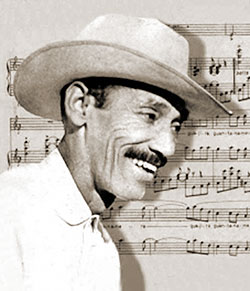 including décima poetry and live improvisation, despite its purely commercial interests, successfully incorporated quite heterogeneous elements, both rural and urban, peasant oral poetry as well as urban dance music. As Jesús Martín Barbero notes, Latin American radio in general served in the 1930s through the 1960s as an outlet for the most diverse local subcultures, and as such became a site of popular nationalist expression (Martín Barbero 177-86). Sarduy, when creating a spectacle around the epitaph of Dolores Rondón, surely must have had in mind that Dolores Rondón was a popular Cuban character in this vein: of mixed race and low social origins, making her way from the countryside to Havana, a symbol of political corruption and money squandering, yet also unmistakably outrageous and beautiful.
including décima poetry and live improvisation, despite its purely commercial interests, successfully incorporated quite heterogeneous elements, both rural and urban, peasant oral poetry as well as urban dance music. As Jesús Martín Barbero notes, Latin American radio in general served in the 1930s through the 1960s as an outlet for the most diverse local subcultures, and as such became a site of popular nationalist expression (Martín Barbero 177-86). Sarduy, when creating a spectacle around the epitaph of Dolores Rondón, surely must have had in mind that Dolores Rondón was a popular Cuban character in this vein: of mixed race and low social origins, making her way from the countryside to Havana, a symbol of political corruption and money squandering, yet also unmistakably outrageous and beautiful.
For a German audience, however, Dolores’s story didn’t seem palatable at first. In 1963, Sarduy turned in a proposal for his radio play “Dolores Rondón,” and the response from the director was mixed. Joachim Schale wrote:
The exposé of the Cuban writer Severo Sarduy […] sounds in the translation that I have a bit muddled. But I think I understood that it is a Cuban (folkloristic) representation, which is hard to stage when reduced only to the acoustic. The (episodic) scenes […] are, if the impression given by this draft is right, full of many details and characters. “Street noises” are mentioned, and a caravan drawn by oxen, negro singers and fat, voracious “graces” […] it is hard to imagine such a folkloristic spectacle—an optimum of what can be envisioned, it seems to me—as a radio play. It would be necessary to tell the author what is possible in a radio play. Also think that such exotic and out of the way subjects cannot be presented without explanations in a form that is limited to the purely acoustic. But the action should be understandable without further comment.(19)
Clearly, Schale found that in this first draft of Sarduy’s, the language emphasized too much both the “audio and the “visual”, his ideal text being more neutral in its language and more clearly framed for the audience.(20) But Schale also had trouble with what he called the “folkloristic” or merely “exotic” aspects of the story that Sarduy wished to present, finding it hard to explain to German listeners.
We don’t know Sarduy’s direct response to this evaluation, only that he must have submitted an improved proposal which was then accepted. At its first broadcast in 1965, “Dolores Rondón” was announced as the “first original radio play from Latin America to be broadcast in Germany.” The German script of the play includes a brief prologue read on air that explains the origin of Dolores Rondón’s poem and the play’s unique non-chronological structure. It then compares the play to Greek tragedy, with a pointed conclusion on the absence of gods, whatever their origin:
If Dolores Rondón, the Cuban mulata whose name is reminiscent of the holy virgin of Spain, gives the impression of being a Caribbean version of Grace, if her three feeble attendants show with their cynical jokes their proximity to the three Fates, if the speakers, who all at once report, embellish and judge the story, are inspired by Greek choir leaders, if—finally—Dolores and Mortal show off in their dialogues a certain preference for rhetoric, then that means that Greek tragedy, choir, goods, and ananke are not far afield. Certainly, the choir leaders are more chatty, and Grace is fat and greedy, certainly, the Cuban Fates smoke Chesterfield—but here and there the gods are deaf (S. Sarduy "Dolores Rondón" n.p.).
Not surprisingly, this part of the play is missing in the novel chapter. In pointing out parallels between Greek tragedy and this play, Sarduy establishes a bridge for educated German listeners of the broadcast that he did not want to offer the Spanish-language readers of the novel. And while he also uses this prologue to announce an important theme of “Dolores Rondón,” the question of the presence or absence of fate and the gods, he chose to omit it in the novel.
The translation into German also lost a few nuances of the Spanish language original of “Dolores Rondón.” For example, it had to omit a number of sayings that do appear in the novel chapter. While not obstructing the basic plot, these omissions diverted from one of the main themes of the play, the idea of miscommunication. Sayings are often used to emphasize generally admitted truths or conventions. But in Sarduy’s fiction they serve to highlight the conventionality of language overall, and its detachment from subjective sensations. Rather than easing communication, the sayings in “Dolores Rondón” mark a lack of listening or attention. In section five of the novel chapter, for example, the hairdresser warns Dolores that she is too capricious in her tastes, stating that whatever she does, she should do it with a purpose: “que el relajo sea con orden.” Dolores, instead of listening to him, counters with another saying, suggesting that she is bored and wants to see change: “el que no cambia se estanca.” By translating literally these two sayings, the translator of the radio play loses the opportunity to prepare the listener for what later is expressed in an extended metaphor: “la palabra corre ante el juego como el perro ante la rebanadora. Se ve en salchicha. Se ve en lascas, con aceitunas, entre panes… y huye” (S. Sarduy De donde son los cantantes 171) (“The Word runs away from play like the dog does from the slicing machine. He sees himself as sausage. He sees himself chipped up in pieces, with olives, between slices of bread… and he runs away”). Words, like dogs, are seen as the thing itself, whereas sayings always will be “highly processed,” prepared for consumption and far away from being real. Sayings play then a paradoxical role in “Dolores Rondón:” they make the text recognizably Cuban, but also highlight Dolores’s isolation and inability to communicate. By not translating the sayings, an underlying theme of the play is buried, namely the idea that language can always only speak through conventions, but that precisely for that reason, sayings and rhetoric, the pitch and intonation with which one speaks, do matter.
How radiophonic was “Dolores Rondón” in the end? By the time he finished the complete radio script, Sarduy had clearly understood the basic predicaments of a German radio play in the mid-1960s: he used a limited number of characters with distinct voices, only few visual aids, and he made relatively sparse use of sound effects and music.(21) Sarduy’s staging instructions were written into the radio script (and mostly obeyed in the German recording of the play), introducing only a few musical or sound themes that lent additional meaning to the play. One theme was the barking of a dog, introduced at the beginning of the play as a metaphor of the difference between being and saying. As one of the narrators put it, in barking the dog tries to “bite reality” but is instead forced to howl after it (S. Sarduy "Dolores Rondón" 3); the voice of a barking dog irrupts later on in the play into Mortal Pérez’s, Dolores’s lover’s, political speech, reminding the listener of the rhetorical emptiness of what he is hearing. Another such sound “bite” was the clacking of a typewriter, which first appears, when Mortal Pérez wins provincial elections, and is repeated again after the fall from grace of Mortal. There are also several moments where Cha-cha-cha music is required in the script, associated with Dolores Rondón at the height of her fame and after her downfall. Here the play’s director Gerd Beermann opted instead of Cha-cha-cha music for a (not quite successful) vaguely African percussion interlude. It was preceded by the ringing of a telephone, announcing the bad news to come. Lastly, short guitar strums separated the ten sections from each other, introducing individual verses of the décima. These highly stylized sound effects served to orient the listener of the play, punctuating the different dramatic sections of Dolores Rondón’s story, introducing certain leitmotifs, and marking Dolores’s belonging to a different musical culture, yet one that equally knew modern generic sounds such as telephones or typewriters.
Strikingly, Sarduy chose not to eliminate but rather amplify the staging instructions in De donde son los cantantes. For example, at the end of section two, after Dolores’s monologue on the threshold of death, Sarduy adds the following stage directions in italics and between parentheses:
(Grito de Dolores. El cha-cha-chá recomienza.)
(En el burdel de al lado Auxilio, Socorro y Clemencia lo bailan agitando sus cabelleras—lentos remolinos de llamas--, dándose palmadas en los labios, mordiéndose los dedos, arrancándose collares de cartílagos, zafándose las cejas, cuarteados ya los rostros, esas máscaras pálidas.) (De donde son los cantantes 149)(Dolores screams. The cha-cha-cha begins again.)
(In the brothel next door, Help, Mercy, and Clemency dance it and wave their tresses—slow whirls of flame—patting their lips, biting their fingers, pulling off their cartilage bone neck-laces, breaking off their eyebrows, their faces now quartered, pale masks.) (From Cuba with a Song 64)
In this case, Sarduy increases the role of Auxilio, Socorro, and Clemencia, and he reminds his reader of their transvestite, sometimes prostitute appearance in the other chapters of the novel. In other occasions, he also adds sound elements. At the end of the chapter, when Dolores, the narrators and the three agree that everything has been said, the following stage directions are provided for Auxilio, who is about to announce plans for the future: “AUXILIO (en jazz de Duke Ellington. Duke al piano, Cootie Williams a la trompeta, Ray Nance al violín, Chuck Connors al trombón-bajo, etc.): Exhibiremos vistosos modelones…” (De donde son los cantantes 172). [HELP (in Duke Ellington jazz, Duke at the piano, Cootie Williams on trumpet, Ray Nance, violin, Chuck Connors, bass trombone, etc.): We will be showing out-of-this-world originals…” (From Cuba with a Song 89)]. The references to famous jazz figures ask the reader to imagine sounds accompanying the final passages of the novel, setting an atmosphere more than giving a precise indication. Instead of creating a unified narrative surface, Sarduy chooses to continue to frame the narration theatrically, having the reader/audience imagine sonic, visual or dance aspects that would normally be tied to a performance rather than a novel.
In the radio play as well as in the chapter, Sarduy overemphasized his narrative frame, using not only a prologue, but also two narrators and three Fates, as well as the occasional hair artist and babalao, all of them commenting on Dolores’s life. By letting the comments on Dolores rather than the action govern the story, he was able to introduce interruptions into his tale that forced listeners to fix their attention on the nature of the conversation itself and less on the content of the story. This was not unlike the Brechtian Verfremdungseffekt (alienating effect), whereby theater audiences in Brecht’s plays were prevented from identifying with a drama’s protagonist, either being told of the plot in advance, hearing stage directions recited, or by having actors play their roles as if in quotation marks. Contrary to Brecht, however, the effect of Sarduy’s framing and distancing effects was less a critical engagement of the audience with social issues brought up by the play, than rather the insistent questioning of the voice’s power to communicate. Communicative skepticism prevails from the beginning of Dolores Rondón on, where the two speakers comment on Dolores Rondón’s life, until one of them proposes to “tell her life’s story, not in the chronological order, but following the verses of the epitaph.” To this, the other one objects, however, commenting that to “tell a story” is absurd, a “vomitive” and ineffective in catching the attention of “thick-skinned” listeners (S. Sarduy "Dolores Rondón" 2; S. Sarduy De donde son los cantantes 142). The play ends with the two speakers returning to their argument about whether the life of Dolores is worth telling, and whether it has served a purpose. They conclude that everything is good for something indeed, but that this something turns out to be nothing (S. Sarduy "Dolores Rondón" 40; S. Sarduy De donde son los cantantes 172).
It seems then that while Dolores Rondón was a transitional first work for Sarduy, it led him to important conclusions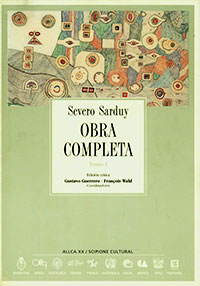 about what could be done on radio and in the novel, and how language could be put to new uses. In the radio play already, one could notice the tendency towards letting an array of commenting voices, sounds and images take over the plot itself. In the novel, this became Sarduy’s principle, as he turned Dolores Rondón’s story into one chapter, and then continued to apply the same theatrical elements, emphasizing auditory and visual sensations. In both “Dolores Rondón” and De donde son los cantantes, Sarduy highlights in this way the effect of voices as they interact, instead of the content of what they say, exploring their potential for expressiveness rather than their exchanges.
about what could be done on radio and in the novel, and how language could be put to new uses. In the radio play already, one could notice the tendency towards letting an array of commenting voices, sounds and images take over the plot itself. In the novel, this became Sarduy’s principle, as he turned Dolores Rondón’s story into one chapter, and then continued to apply the same theatrical elements, emphasizing auditory and visual sensations. In both “Dolores Rondón” and De donde son los cantantes, Sarduy highlights in this way the effect of voices as they interact, instead of the content of what they say, exploring their potential for expressiveness rather than their exchanges.
While one might want to think that radio enhances the intimate character of the voice and thus creates an elevated notion of subjectivity, Sarduy emphasizes here the contrary, offering multiple perspectives on Dolores and turning her into a radically incomplete character. In “Dolores Rondón” Sarduy stages, so to speak, the death of the unified subject rather than its apotheosis, using radio’s potential to upstage overlapping and echoing voices, without forcing them into a dialogue. Sarduy also refuses to limit radiophonic devices such as narrative framing and sound effects to the radio; instead he exploits the theatrical possibilities of the radio play and then even exaggerates them in the novel.(22) Fittingly, Sarduy explained his rationale for this narrative strategy of undoing the unified subject in the prologue to his second and most successful radio play written for the SDR, Strand (1969; “The Beach”): “There are no characters, properly speaking, since psychology and dramatic coherence are subjected, like the rest of data, facts, or the landscape, to the chance occurrences of transformations. Rather than characters, these are actants (actuantes), or carriers of texts” (S. Sarduy Para la voz 15). This logic of linguistic rather than psychological transformation is at the core of Sarduy’s language philosophy, which may be gleaned from his essays but is rarely as clearly expressed as here. From “Dolores Rondón” on, in his radio plays as well as in literature he began to seek out a language of sensations, of bodily, audio-visual effects and theatrical structures of evocation rather than narration.
There is no way denying that Sarduy was deeply implicated in the modernist questioning of language’s powers of communication, privileging instead a logic of sensation, not unlike that described by Gilles Deleuze with reference to Francis Bacon. That this modernist logic of sensations was at least as much auditory as it was visual has to do, I believe, with Sarduy’s work over many years for the radio. Yet, I would like to suggest also that Sarduy added to radio modernism a unique timbre or tonality, which perhaps lies indeed in the “happiness” of his language noted by Barthes, contrasting with the anguish often associated with Beckett’s works, for example. This happiness seems to be that of the listener himself who is content to capture in his writing Cuban voices and those of others that he makes his own, turning Dolores Rondón into a human cipher, understandable for audiences of all walks of life.
I’d like to close by suggesting therefore that reading together Sarduy’s radio plays and his literature helps us to understand some of the most aesthetically and philosophically challenging aspects of his work in any medium. It seems appropriate to take note of the differences between the “radiophonic” or “literary” properties of his texts. But we should also not stop reading them together, as they were written by an author exploring the same questions through a number of channels and with a number of audiences in mind. We would therefore have to analyze and restore to the extent possible radio plays such as those by Sarduy, incorporating them into Cuba’s shared literary, sonic and visual archives.
Notes
1. Parts of this argument were first presented at the Coloquio Homenaje Internacional a Severo Sarduy (June 5-8, 2013), organized by Gustavo Guerrero and Catalina Quesada. I thank both for the opportunity to first present my research there. The argument of this essay also owes a great deal to my conversations and correspondence with Mercedes Sarduy and Werner Spies, to whom I am grateful for their generosity. Research and writing was made possible by an emergency grant-in-aid (OVPR, Indiana University) and a Title VI research grant (CLACS, Indiana University).
2. This translation as well as all other translations from French and German are mine, except otherwise indicated, A.B.
3. About cultural histories of sound see Jonathan Sterne’s The Audible Past. The Cultural Origins of Sound Reproduction as well as, more focused on radio, Martin Harries’s and Lecia Rosenthal’s excellent special issue for Cultural Critique on Comparative Radios.
4. On daytime serials of the U.S. golden age of radio, see Michele Hilmes. On French radio plays dealing with crime stories, fantasy, and science fiction, see Jacques Baudou. For Cuba, there are two histories of radio, one by Oscar Luis López, the other more specifically on the Cuban radionovela by Reynaldo González.
5. Klaus Schönings in his „Spuren des Neuen Hörspiels“ discusses incisively German radio plays of the 1950s and early 1960s, and the changes that led to the rise of what he called the “new radio play” of the late sixties, with radio dramas using original sounds, collage and other creative techniques to dramatize works written specifically for the radio. The astonishing evolution of the German radio play was made possible by the creation of regular program slots in federal radio stations, as well as of awards and a new generation of authors and radio actors shaping the German “new radio play” (Schöning).
6.“El verdadero salto, la privación de la tierra natal, no son físicos, aunque nos falte el rumor del Caribe, el olor dulzón de la guayaba, la sombra morada del jacarandá, el manchón rojizo, sombreando la siesta de un flamboyán, y sobre todo la voz de Celia Cruz, las voces familiares de la infancia y de la fiesta. Aunque nos falte la luz. El verdadero salto es lingüístico: dejar el idioma—a veces él nos va dejando—y adoptar el francés.” (“Exilado de mi mismo” Obra completa 42) [“The true leap, the privation from one’s native land is not physical, even though we might miss the rumor of the Caribbean, the sweet scent of the guayaba, the brown shadow of the jacaranda tree, the reddish stain that throws its shadow over the siesta of a flamboyant tree, and most importantly the voice of Celia Cruz, the familiar voices of infancy and of a feast. Even though we might miss the light. The true leap is a linguistic one, leaving language behind—sometimes she ends up leaving us—and adopting French.”]
7. On Sarduy’s regular radio shows for Radio France Internationale, see Mercedes Sarduy’s memoirs, Cartas a mi hermana en La Habana, especially the letters of September 30, 1967, and of September 6, 1982 (M. Sarduy 289; 331).
8. The archive of the Süddeutscher Rundfunk holds recordings and German language scripts of these radio plays, titled as follows: “Strand” [“La playa”] (1969), “Eine Öffnung im Fels” [“Relato”] (1970), “Katakomben” [“La caída”] (1973), and “Die Ameisentöter” [“Los matadores de hormigas”] (1975). Para la voz mentions that “La playa,” “Relato,” and “La caída” were also broadcast in France (137-138). According to the BBC reference desk in London, “La playa,” “La caída,” “Los matadores” and “Tanka” were broadcast by the BBC. I thank Tom McEnaney for having alerted me also to the existence of a U.S. American broadcast of “La playa.”
9. “Dolores Rondón” is mentioned briefly by Roberto González Echevarría in his La ruta de Severo Sarduy (González Echevarría 1987: 41). Several letters of Sarduy speak of broadcasts of “Dolores Rondón” in France and in England (M. Sarduy 107-113). However, I have not been able to confirm those broadcasts.
10. Sarduy’s Obra completa includes two more radio plays, “Tanka” (in Spanish) and “Je vous écoute” (in French) which seem to have been written after 1979 for other radio stations.
11. On June 18, 1967, shortly after the publication of De donde son los cantantes, Sarduy writes to his family: “La novela [De donde son los cantantes] ha sido un éxito, creo que puedo afirmarlo con toda objetividad. Eso es lo que más me interesa de todo lo que hago. Ahora escribo otra pieza de radio. Pero bueno lo que hago por radio, literatura y ciencia incluidas, lo considero un trabajo para ganarme la vida, no obstante lo hago seriamente, y de esa emisión científica que van a oír se hacen 90 copias en discos que se pasan en las Universidades de España y América del Sur” [“The novel (De donde son los cantantes) has been a success, I think I can say that objectively. Of all the things that I do, this is what I am most interested in. Now I am writing another radio play. But of course, what I do for the radio, literature and science included, I consider it work, allowing me to make a living. Nevertheless, I am serious about it and of that scientific program that you will hear, 90 LP copies are made that are played in universities in Spain and South America” (M. Sarduy 289)].
12. Alongside Sarduy, Spies commissioned plays from Beckett, Sarraute, and Robert Pinget, among others. According to Spies, his mediation resulted in a total of more than seventy original radio plays written for the SDR (Werner Spies, personal email, June 29, 2015).
13. As Brian Kane has discussed in his recent book, a history of acousmatic listening would have to explain and further contextualize the long tradition, since Pythagoras’s veil, of listening to music (or sounds) separated from its origin. The experience of sourceless sound, in any case, would have been experienced as uncomfortable in most historical moments, provoking the imagination of a secondary, imaginary body (Kane 8). This uncomfortable sensation of listening to unknown voices could in Sarduy’s and Beckett’s case spark their desire to write, creating “secondary bodies.”
14. It is interesting to compare this philosophy of the voice to what Jonathan Sterne has called the “audiovisual litany” (Sterne 15). For Sterne, there is a long history of considering sound and vision as opposites, whereby sound is associated with things such as immersion, interiority, subjectivity, temporality, and the living, and vision would be directional, offering perspective, surfaces, objectivity, spatiality, and a tendency toward death or atrophy. Sarduy’s reflections on the voice agree with some of these ideas, in so far as the effect of the voice of others on him seems to shape his own sense of subjectivity, whereas images constitute for him an entirely different realm. Sarduy is, however, not a defender of any supposedly essential qualities that would be inherent to the voice but not to writing, as is the case with Walter Ong’s theory of orality and literacy, cited by Sterne. Nor does he in my view subscribe entirely to Derrida’s deconstructive critique of such theologies of the presence of the spoken word, insisting in equally categorical terms on the différance, or the deferral of meaning, construed always only in relation to other words. While Sarduy, of course, knew Derrida’s critique very well, his own insistence on the voice as a constitutive element of his written work, suggests that he developed a poetics of the spoken word situated on neither side of the ideological divide between the defenders of orality and those of deconstruction.
15. In his questioning of conventional, realistic models of dialogue and subjectivity to the exclusion of the body, Sarduy had been preceded by a number of avant-garde artists, many of whom also worked for the radio. The French dramatist Antonin Artaud, for example, presented in his essay The theater of the cruelty the idea that language had to be broken up, forcing speakers to pay attention to gesture, intonation and improvised, affective modes of speaking (Artaud 56).
16. The script of “Dolores Rondón” was never published and the Spanish original is by all accounts lost. I have used here the German translation of the script of Sarduy’s radio play as well as the recording, held at the archives of the Süddeutscher Rundfunk.
17. See Mark E. Cory’s discussion of the German “classical” Hörspiel in his The Emergence of an Acoustical Art Form (Cory 1-23).
18. Conversation with Mercedes Sarduy, Miami, February 28, 2015.
19. Letter Joachim Schale to Werner Spies, November 12, 1963. Archive SDR.
20. The incorporation of original recorded sound (O-Ton in German) such as street noises into radio plays became common in German radio only in the 1970s.
21. Bernhard Siegert calls this type of relatively austere radio play, focused on narration and on few stylized sound effects, the “negative aesthetics” of the German post-war radio play until the mid-1960s. After that, the “new radio play” began to more actively include recorded sound and use innovative collage techniques. Sarduy’s other radio plays participated in this later vogue.
22. As already mentioned, Sarduy added in the novel chapter of De donde son los cantantes, Sarduy several short scenes with Auxilio, Socorro, and Clemencia; he also added two minor characters, an antiquarian and a pastry baker, that would probably have confused listeners of the radio play, but could easily be included in the written text.
Works Cited
Artaud, Antonin. "Le théâtre et son double." Oeuvres complètes. Vol. IV. Paris: Gallimard, 1964. 11-175.
Baudou, Jacques. Radio Mysteres. Le théatre radiophonique policier, fantastique et de science-fiction. Amiens: Encrage/I.N.A., 1997.
Bauman, Richard. "'First Verses I Ever Knew': Américo Paredes and the Border Décima." Journal of American Folklore 125.495 (2012): 5-22.
Cohen, Debra Rae. "Modernism on Radio." The Oxford Handbook of Modernisms. Eds. Peter Brooker, et al. New York: Oxford University Press, 2010.
Cooppan, Vilashini. Worlds Within. National Narratives and Global Connections in Postcolonial Writing. Stanford: Stanford University Press, 2009.
Cory, Mark E. The Emergence of an Acoustical Art Form. An Analysis of the German Experimental Hörspiel of the 1960s. Lincoln: University of Nebraska, 1974.
de Ferrari, Guillermina. Vulnerable States. Bodies of Memory in Contemporary Caribbean Fiction. Charlottesville, London: University of Virginia Press, 2007.
Deleuze, Gilles. Francis Bacon: The Logic of Sensation. 1981. Trans. Daniel W. Smith. Minneapolis, London: University of Minnesota Press, 2005.
Esslin, Martin. "Samuel Beckett and the Art of Radio." On Beckett. Essays and Criticism. Ed. S.E. Gontarski. London, New York, Delhi: Anthem Press, 2012. 273-91.
González, Reynaldo. Llorar es un placer. La Habana: Letras Cubanas, 1988.
Guerrero, Gustavo, and Xosé Luis García Canido. El Oriente de Sarduy. Madrid: Instituto Cervantes, 2008.
Harries, Martin and Lecia Rosenthal, eds. Comparative Radios. Spec. issue of Cultural Critique 95 (Fall 2015): 1-163.
Hilmes, Michele. Radio Voices. American Broadcasting, 1922-1952. Minneapolis, London: University of Minnesota Press, 1997.
Kane, Brian. Sound Unseen. Acousmatic Sound in Theory and Practice. Oxford, New York: Oxford University Press, 2014.
Landfried, Carrie C. "Voicing the Prevocal: Nathalie Sarraute's Foray into Radio Drama." Cultural Critique 91 (2015): 98-113.
López, Oscar Luis. La radio en Cuba. Estudio de su desarrollo en la sociedad neocolonial. La Habana: Editorial Letras Cubanas, 1981.
Martín Barbero, Jesús. De los medios a las mediaciones. Barcelona: Editorial Gustavo Gili, 1987.
Pérez, Rolando. Severo Sarduy and the Neo-Baroque Image of Thought in the Visual Arts. Purdue Studies in Romance Literatures. West Lafayette: Purdue University Press, 2012.
Romero, Cira. Severo Sarduy en Cuba. 1953-1961. Santiago de Cuba: Editorial de Oriente, 2007.
Sarduy, Mercedes. Correspondencia de Severo Sarduy. Cartas a mi hermana en La Habana. Coral Gables: Severo Sarduy Cultural Foundation, 2013.
Sarduy, Severo. De donde son los cantantes. 1967. Ed. Roberto González Echevarría. Madrid: Cátedra, 1993.
---. "Dolores Rondón." Unpublished script. Stuttgart: Archive, Süddeutscher Rundfunk, 1965.
---. From Cuba with a Song. Trans. Suzanne Jill Levine. Los Angeles: Sun & Moon Press, 1994.
---. Obra completa. Eds. Gustavo Guerrero and Francois Wahl. Madrid: ALLCA XX, 1999.
---. Para la voz. Madrid: Fundamentos, 1978.
Schöning, Klaus. "Spuren des Neuen Hörspiels." Spuren des Neuen Hörspiels. Ed. Klaus Schöning. Frankfurt: Suhrkamp, 1982. 17-58.
Siegert, Bernhard. "Das Hörspiel als Vergangenheitsbewältigung." Medienkultur der 50er Jahre. Eds. Irmela Schneider and Peter M. Spangenberg. Vol. 1. Wiesbaden, 2002.
Sterne, Jonathan. The Audible Past. Cultural Origins of Sound Reproduction. Durham & London: Duke University Press, 2003.


